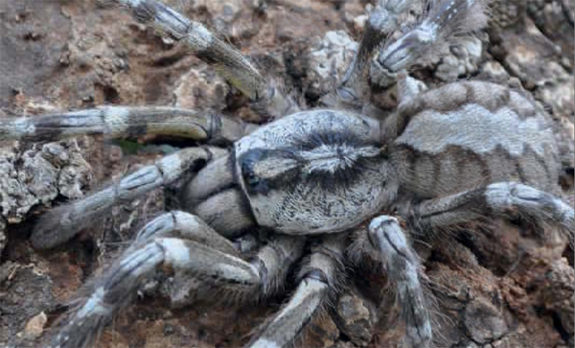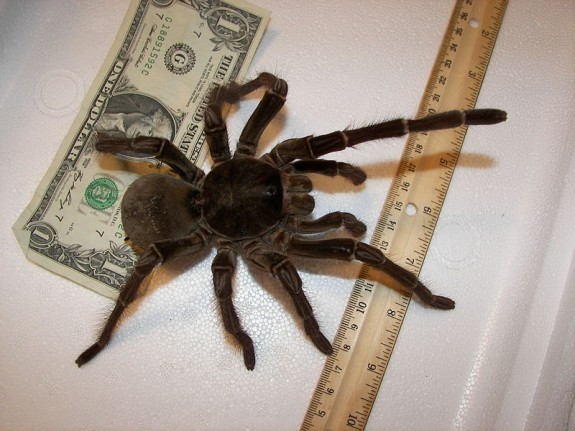This Giant New Tarantula Has an Eight-Inch Leg Span
Say hello to Peocilotheria rajaei, Sri Lanka’s most recently discovered giant spider.

The new giant tarantula. Photo: Nanayakkara et al.
Let’s design the world’s most terrifying spider, shall we?
First, we’ll get the basics down: the legs, the eyes, the fangs. Some spiders, like the giant huntsman, look scary but are basically harmless. We can’t have that. Our spider needs to be poisonous. Let’s make it super fast, too, able to dart around in and out of reach. It needs to have camouflage and a propensity for hiding in the world’s nooks and crannies, ready to jump out and scare the bejesus out of us. Now, we’re almost there, but we’re certainly missing something. Oh, I know, let’s make it the size of your face.
Say hello to Peocilotheria rajaei, Sri Lanka’s most recently discovered giant spider.
Scientists first encountered the new tarantula in 2009, when villagers in northern Sri Lanka gave them the corpse of one that they had killed. From there, the scientists went on a quest to find more, routing around in tree holes and bark peel with a foot-wide hand net. (Some scientists are tough as nails.) We’re not advocating for any harm to come to these little (gigantic) spiders, but we can certainly all admit that some creatures are just a little more nightmare-inducing than others.
The new spider was just described in the British Tarantula Society Journal. Wired:
Covered in beautiful, ornate markings, the spiders belong to the genus Poecilotheria, known as “Pokies” for short. These are the tiger spiders, an arboreal group indigenous to India and Sri Lanka that are known for being colourful, fast, and venomous.
According to the scientists, the new spider, whose legs span up to 8 inches, usually lives in “bark peels, naturally occurring tree hollows and, at times, found under rocks, decaying trees and in cracks in brick walls; however during the monsoonal period they display a tendency to enter human dwellings that border forested areas.” Because nothing makes the monsoons more fun than having a face-sized tarantula hiding in your house.
The new spider isn’t the world’s largest, that award still goes to the goliath birdeater.

The goliath birdeater. Cute little guy, eh? Photo: Snakecollector
Based on the spider’s colorful markings the scientists decided it was a new species. Future genetic work could confirm this decision.
More from Smithsonian.com:
Urbanization Is Supersizing Spiders
Being a Naturalist Is Way More Dangerous Than You Think
Gargantuan Spider Webs Bridge Waters of Madagascar
/https://tf-cmsv2-smithsonianmag-media.s3.amazonaws.com/accounts/headshot/smartnews-colin-schultz-240.jpg)
/https://tf-cmsv2-smithsonianmag-media.s3.amazonaws.com/accounts/headshot/smartnews-colin-schultz-240.jpg)